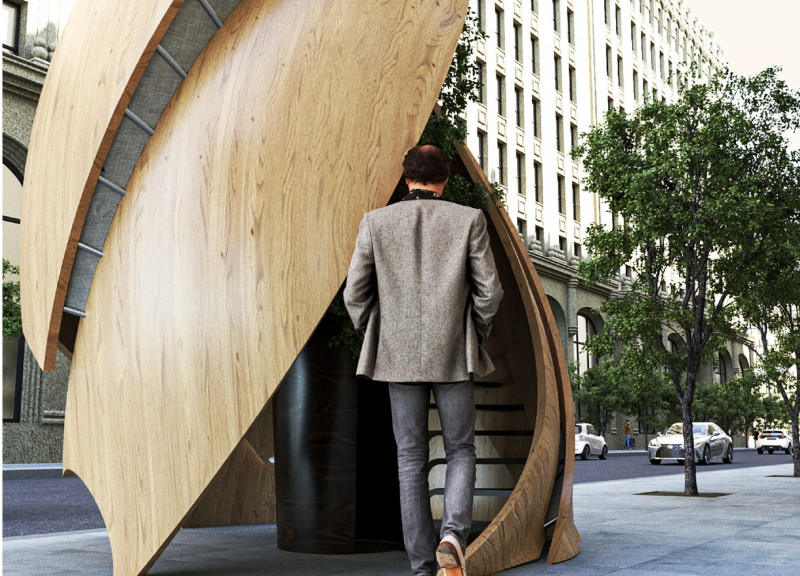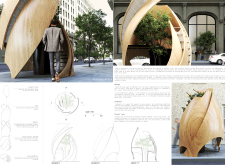5 key facts about this project
The core function of the "Contemplation" structure is to provide a serene space for meditation and reflection. It serves as a refuge where individuals can disconnect from their surroundings and reconnect with themselves, emphasizing the importance of mental well-being in our contemporary world. This unique structure is not merely an isolated entity; it actively encourages social interaction, allowing users to share moments of peace within a communal setting. The project aims to democratize access to these vital experiences, making mindfulness practices available to all.
A notable aspect of the "Contemplation" project is its innovative design and unique architectural approach. The form of the structure is characterized by fluid, curvilinear lines that evoke a sense of organic growth and movement. These gentle curves are not only visually engaging but also serve to enhance the user's experience, guiding them through the space in a manner that encourages contemplation. The design incorporates strategically placed openings and windows that frame views of the surrounding environment, fostering a connection with the natural world while allowing ample natural light to flood the interior.
In terms of materiality, the project exhibits a thoughtful selection of sustainable materials that prioritize tactile engagement and aesthetic warmth. The use of wood as the primary facade material underscores a commitment to creating a welcoming and inviting atmosphere. This choice of material aligns with the project’s overarching theme of connection to nature, as wood resonates with the organic elements of the setting. Complementing the wooden facades, a pin structure is used to provide structural integrity while maintaining a lightweight appearance, ensuring that the architectural form remains dynamic and visually appealing.
Secondary facades are constructed using fabric, introducing an element of transparency and lightness that enhances the interplay between the interior and exterior environments. This fabric serves not only as a functional component but also contributes to the overall aesthetic by softening the architectural lines. The design includes essential features such as stairs, which facilitate movement and connection between different levels, while also maintaining the cohesiveness of the overall design theme.
The integration of landscaping elements further complements the architectural design, creating a harmonious relationship between the built and natural environments. The incorporation of greenery, specifically a “street tree” at the center of the designed space, emphasizes the importance of nature in urban settings. This attention to landscaping not only improves air quality but also offers shade, enhancing the overall usability of the space.
Overall, the "Contemplation" project stands as a relevant architectural response to the complexities of modern urban living. By focusing on the interplay of form, function, and materiality, the design encourages a re-engagement with mindfulness and social connection, challenging users to reflect on their relationship with their surroundings and improve their mental well-being. It serves as a reminder of the importance of creating spaces that prioritize human experience in an increasingly disorienting world.
For those interested in exploring the full scope of this architectural endeavor, delving into the architectural plans, sections, and design details will provide richer insights into the project's innovative ideas and its response to urban challenges. An examination of "Contemplation" reveals not just the architectural aesthetics but also the thoughtful considerations that underpin its design and functionality.























